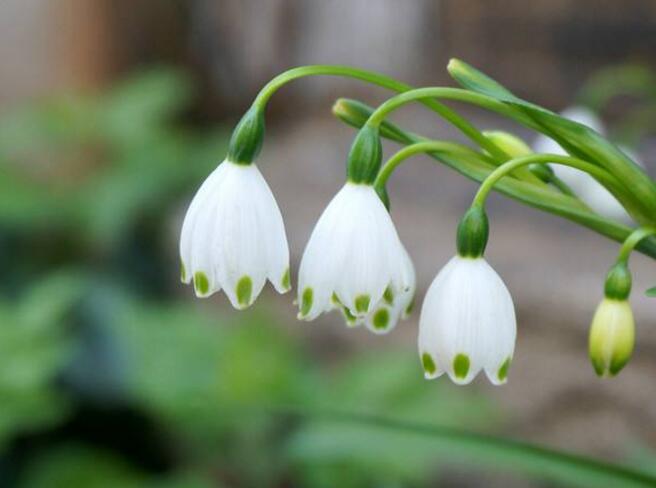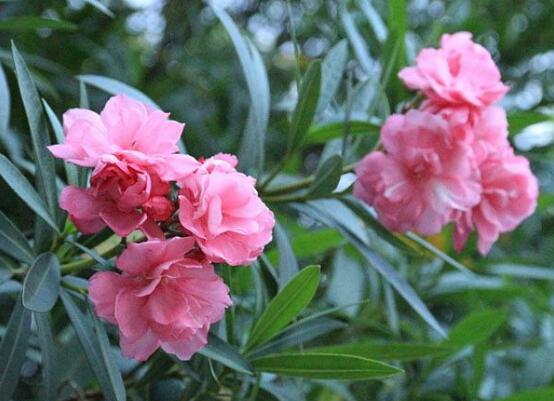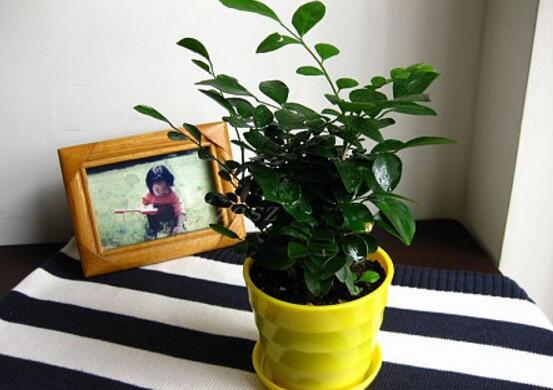How to reproduce the bell orchid, the propagation method / ramet / sowing of the bell orchid
Lilia lanceolata is a kind of common flower in people's life, which has high medicinal value. How to reproduce lily orchids can be divided into two methods: plant propagation and sowing reproduction, among which sowing propagation is more common. As for the breeding method of the lily of the valley, what is the specific method? The following is described in detail, you can take a look.

First, how to propagate / ramet / sow the lily of the valley
About how to reproduce the lily orchid, it can be divided into two propagation methods: dividing plants and sowing. As long as you master the main points, the survival rate of these two propagation methods is still very high. Do you want to know how to operate this propagation method? Let's move on.
Second, the propagation methods of lily orchids.
1. Sowing and reproduction
Sowing reproduction is one of the most common methods of reproduction of the lily, and it is also the one that many people will choose. The survival rate of reproduction by using this method is still very high. The fruit of the orchid usually ripens in autumn, when we can take it down and sow and reproduce.
Note: the lily of the valley is not very demanding for the soil, and the general soil can keep it alive. However, remember to keep the soil moist and shade after sowing, because the lily orchid is a shade-loving plant that usually sprouts in the spring of the second year after sowing.
two。 Ramet propagation
The ramet propagation of the lily of the valley is to reproduce by dividing the bulbs on the rhizome, generally, it is best to choose to split in spring and autumn, the climate of these two seasons is more suitable; the growth of the orchid, so the survival rate will be greatly improved.
Note: when ramets, the rhizomes from these ramets should be preserved at a temperature of 3-5 °for about 14-20 days before they are planted, and then they can be maintained when they grow 4-5 buds. Specific maintenance methods can refer to the culture methods of bell orchids.
Cultivation methods of Lily Orchid
The lily orchid may not be very familiar to all of us, but it has a certain ornamental value, and it is called the national flower in some western countries. today, let's talk about the cultivation methods of the lily orchid. The lily of the valley is a perennial perennial herb with rhizomes underground. Belonging to the genus Liliaceae, also known as Yuling and Junyingcao, the leaves of the orchid are different from other flowers with many leaves. The orchid has only two leaves in its life, but it occasionally has three leaves. The small flowers that seem to be shy and drooping look like bells and are of great ornamental value. And the lily of the valley is the national flower of Finland, in France, the lily of the valley is a symbol of purity and happiness!
First, the ecological habit of the lily is relatively cold-resistant, but avoid dry, hot, like the semi-shady, cool and humid environment, if the lily is in a state of high temperature for a long time, the leaves of the plant will wither and yellow ahead of time. As long as the lily is in a cool environment, its roots will multiply rapidly, so shade and moist and fertile soil are important conditions for the cultivation of lily orchids.
Second, the method of propagation is usually based on ramet propagation, and seed reproduction can also be carried out. The best time for ramet propagation is in spring and autumn. There are buds of different sizes on the rhizome of the lily, and each terminal bud should be cut off with a rhizome for cultivation. Seed propagation can be carried out in autumn and can be sown with seeds from ripe berries.
Third, cultivation management due to the strong peanut characteristics of Lily of the valley is relatively extensive in management, after sprouting, often applying some cake fertilizer can make the lily flowers blossom and flourish, pay attention to stop fertilization after scape extraction, and apply fertilizer once or twice after flower fade to promote rhizome germination. Watering the lily should be replenished according to temperature and soil moisture.
Although the flowers of the lily orchid are very beautiful and have a certain ornamental value, the lily orchid is poisonous. The lily orchid occasionally has orange fruit, and all parts are poisonous, especially the leaves, and even the water that keeps the flowers. Therefore, we must pay attention to it when breeding. The above is the cultivation method of the bell orchid provided by Huayu website for you, for flower lovers to do reference, if you need other flower culture methods, please visit the Flower language website for more information!
How to propagate and cultivate lily of the valley, and the methods of propagation and cultivation of lily of the valley
Lily of the valley plant is short, elegant and beautiful, fragrant and pleasant, is an excellent potted ornamental plant, usually used in flower beds, can also be used as ground cover plant, its leaves are often used as flower arrangement material. There are milky white, pink and variegated leaves and other varieties. At the beginning of autumn, the red fruit is delicate and attractive. So how to propagate and cultivate the lily of the valley? The following is to introduce the methods of breeding and cultivation of lily of the valley.
How to propagate and cultivate lily of the valley, propagation and cultivation methods of lily of the valley
1. Reproduction
Lilia lanceolata is usually propagated mainly by ramet, and seed reproduction can also be carried out. The best time for ramet propagation is in spring and autumn. There are buds of different sizes on the rhizome of the lily, and each terminal bud should be cut off with a rhizome for cultivation.
Seed propagation can be carried out in autumn and can be sown with seeds from ripe berries.
2. Soil cultivation
(1) site selection: select shady hillsides, forests and grasslands with thick humus. Contour line or Hengshan belt, the bandwidth is 1.5m, the belt spacing is 2m, and the row point distance is 50x20cm. Hole ploughing, soil crushing, suppression, in the shape of steamed bread.
(2) planting: deep ploughing and fertile soil is better. Need to change land and replant every 3-4 years, or rotate with other flowers. The row spacing of the planting plant is 2530 cm, each clump has 2 buds, and the depth of the covered soil is 5 cm 6 cm.
3. Potted plants
In November, fat and large rhizome buds were selected and stored in 3 ℃ ~ 5 ℃ for 14 days. Then they were taken out and planted in pots with 4 buds per pot.
Matters needing attention in planting lily of the valley
1. Native wild species often grow in groups and seldom invade by diseases and insect pests.
2. Planting in greenhouse is easy to breed diseases and insect pests, such as stem rot, anthrax, leaf spots and other fungal diseases.
3. Copper fungicides should be used regularly at ordinary times, and seed collection and reproduction from diseased plants are strictly prohibited. Once diseased plants are found, they should be destroyed and cleared immediately to prevent spread.
4. If you have brown spot, spray with 75% chlorothalonil wet powder 700 times.
- Prev

How to propagate oleander, two propagation methods of oleander / high survival rate of cuttage in spring
Oleander, a kind of ornamental plant, although it is poisonous, its beauty and medicinal value are beyond doubt, which is one of the reasons why people grow oleander when they know it is poisonous. Because of the efficacy of oleander, it is imperative to propagate it in large quantities. How to reproduce oleander?
- Next

How to reproduce Jiuli incense? the survival rate of three propagation methods / striping propagation is high.
Jiuli incense, a kind of ornamental plant, is very popular with flower friends because of its beautiful plant shape and rich fragrance of flowers. And because Jiuli incense has many effects and functions, especially its medicinal value, it can treat various diseases, so it is widely propagated by people, so how does it reproduce? As far as the editor knows,
Related
- Fuxing push coffee new agricultural production and marketing class: lack of small-scale processing plants
- Jujube rice field leisure farm deep ploughing Yilan for five years to create a space for organic food and play
- Nongyu Farm-A trial of organic papaya for brave women with advanced technology
- Four points for attention in the prevention and control of diseases and insect pests of edible fungi
- How to add nutrient solution to Edible Fungi
- Is there any good way to control edible fungus mites?
- Open Inoculation Technology of Edible Fungi
- Is there any clever way to use fertilizer for edible fungus in winter?
- What agents are used to kill the pathogens of edible fungi in the mushroom shed?
- Rapid drying of Edible Fungi

